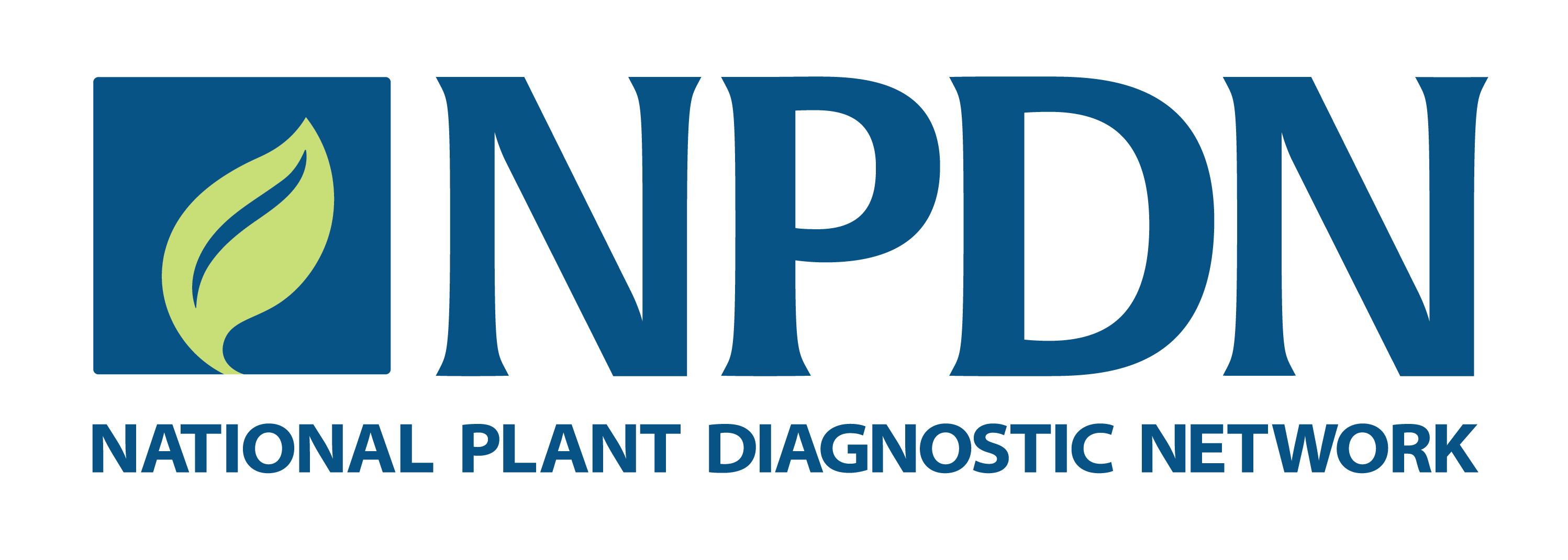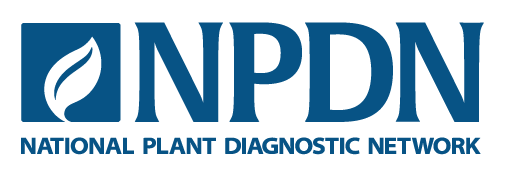If you suspect a new, regulated, or otherwise significant pest:
For suspected Select Agent, please follow the instruction in the Select Agents section of this page.
For suspected Phytophthora ramorum. visit the USDA’s P. ramorum webpage for instructions in addition to those provided below.
- Contact the sample state's:
- State Plant Regulatory Official (SPRO).
- State Plant Health Director (SPHD). The SPHD will enter the sample information into the Agriculture Risk Management (ARM) system and provide a diagnostic receipt form to the lab submitting the sample. Samples cannot be shipped (and will not be accepted by APHIS's Plant Pathogen Confirmatory Diagnostics Laboratory) without the diagnostic receipt from ARM. If shipping a sample to the PPCDL, send an email to APHIS-PPQCPHSTBeltsvilleSampleDiagnostics@usda.gov prior to shipment.
- Courtesy contact the National Plant Diagnostic Network (NPDN) or State Department of Agriculture (SDA) local diagnostician, who may receive similar samples.
- Contact the USDA APHIS PPQ Domestic Diagnostic Coordinator for instructions on how and where to mail a sample for confirmation. More about: Requesting USDA confirmation for a suspected pest id.
- Use USDA-PPQ FORM 391 with sample submissions.
- Ship samples via overnight express courier (e.g. DHL, FedEx, UPS). DO NOT REQUIRE A SIGNATURE UPON RECEIPT.
- Official USDA results will only be reported back to the SPHD and SPRO. They are responsible for forwarding official USDA results to sample submitters, diagnosticians, and other relevant entities. Following up is recommended to determine outcome. See section "Notification of Results".
NPDN Regional Center Labs
If you need assistance in identifying a potentially new/high impact pathogen, contact your regional center staff before sending samples.
Also, contact your state's local SDA and/or NPDN contact for testing capacity.
-
- Southern Plant Diagnostic Network (SPDN)
- North Central Plant Diagnostic Network (NCPDN)
- Northeast Plant Diagnostic Network (NEPDN)
- Western Plant Diagnostic Network (WPDN)
- Great Plains Diagnostic Network (GPDN)
Download the printable diagnostic Confirmation and Communication Protocol CHECKLIST
National Plant Board Regulations page
National Pest Program
USDA Plant Pest and Disease Programs
Select Agent Program
- If your laboratory has a 526 permit, follow all permit conditions relating to the detection of a select agent. Failure to comply with your permit conditions is a violation of the Agricultural Bioterrorism Protection Act of 2002.
- Contact the sample state’s State Plant Regulatory Official (SPRO).
- Contact the sample state’s State Plant Health Director (SPHD).
- Contact your organization's Safety Officer to determine their role and requirements in the specific detection.
- Complete Form 4A and send to the Department of Agricultural Select Agents and Toxins (DASAT) at DASAT@usda.gov. This must be completed in seven days.
- Email the Plant Pathogen Confirmatory Diagnostics Laboratory informing them of an incoming sample (APHIS-PPQCPHSTBeltsvilleSampleDiagnostics@usda.gov), the PPCDL Responsible Official (RO) or Alternate Responsible Official (ARO) will assist you in completing a Form 2. The RO/ARO will initiate the transfer process via Form 2.
- Complete Section B of Form 2. Once approved, DASAT will send approval of the Form 2.
- Do NOT send the sample until you have an approved Form 2 from DASAT.
- Complete PPQ Form 391 and provide to the SPHD to generate a Diagnostic Receipt (DR) in the Agriculture Risk Management (ARM) system (https://www.aphis.usda.gov/library/forms/pdf/PPQ_Form_391.pdf).
- Courtesy contact the National Plant Diagnostic Network (NPDN) or State Department of Agriculture (SDA) local diagnostician, who may receive similar samples.
- Contact the USDA, APHIS, PPQ Domestic Diagnostic Coordinator for instructions on how and where to ship a sample for confirmation (PPQ.Domestic.Diagnostic.Coordinator@usda.gov).
- Prepare sample materials and ship via UPS/FedEx overnight delivery. Include a hardcopy of the PPQ Form 391 and the DR from ARM. (Guidance on the Transfer of Select Agents and Toxins: Packaging and Labeling | Compliance | Federal Select Agent Program)
- Email tracking number, PPQ Form 391, and the DR from ARM to the PPCDL. Include SPHD, SPRO, and others as determined in your state in the Cc of the email. Official USDA results will only be reported back to the SPHD and SPRO. They are responsible for forwarding official USDA results to sample submitters, diagnosticians, and other relevant entities. Following up is recommended to determine outcome. See section "Notification of Results".
- Coniothyrium glycines (formerly Phoma glycinicola and Pyrenochaeta glycines)
- Ralstonia solanacearum
- Rathayibacter toxicus
- Sclerophthora rayssiae
- Synchytrium endobioticum
- Xanthomonas oryzae
Download the printable diagnostic Select Agent Confirmation and Communication Protocol CHECKLIST
If you have questions or want to report a problem in this page please contact the Regulatory Relations Committee regulatory@npdn.org.
Revision History:
| October, 2021 | V_1.0 | First version published |
| November 14, 2022 | V_1.1 | Added information about SPHD and NPB |
| June 5, 2024 | V_1.2 |
Updated national program pests table and added P. ramorum program email to table. |
| July 24, 2025 | V_1.3 | Updated Select Agents section to include detailed directions and added Select Agents checklist. |

